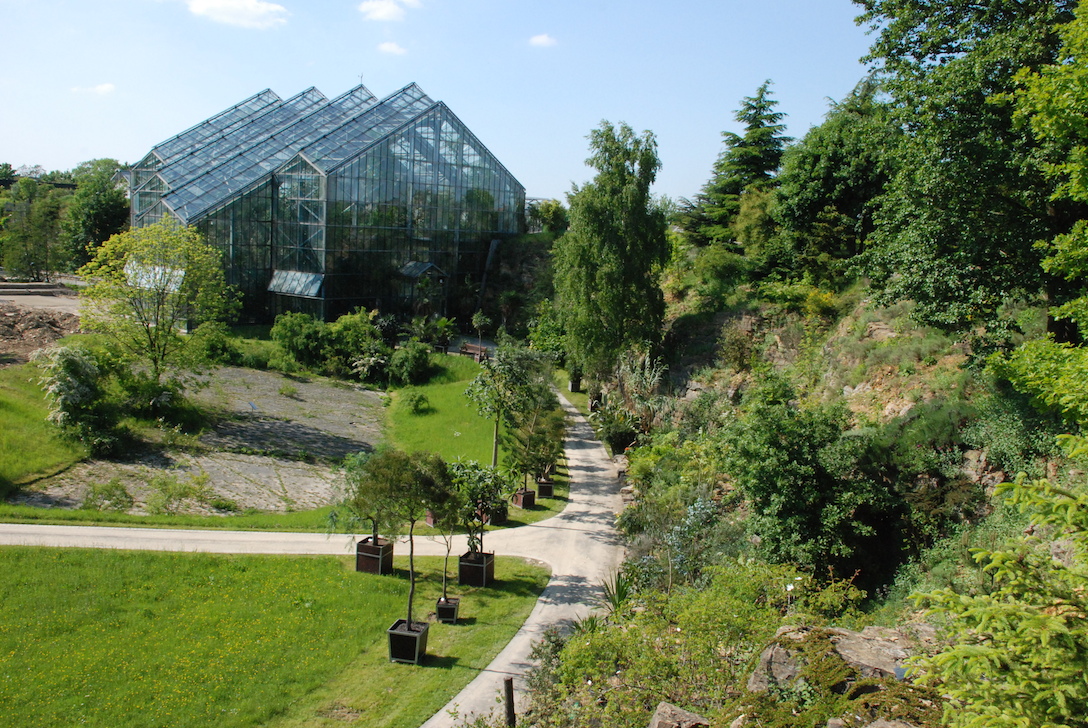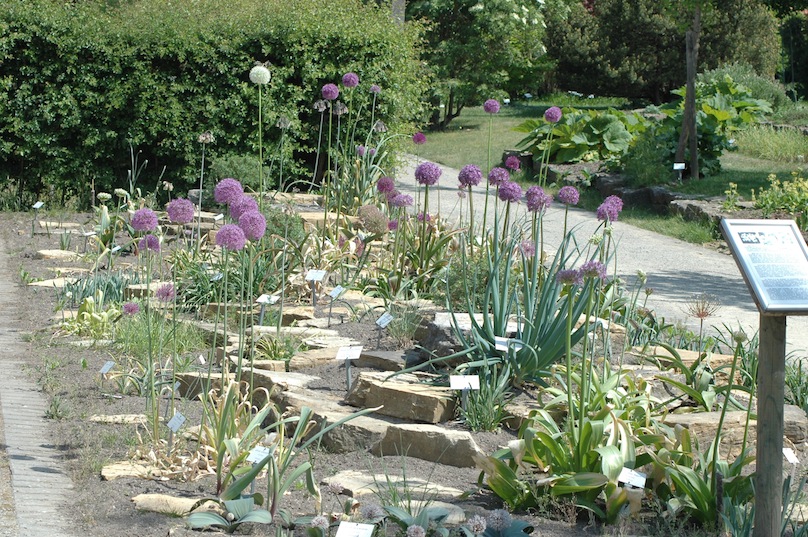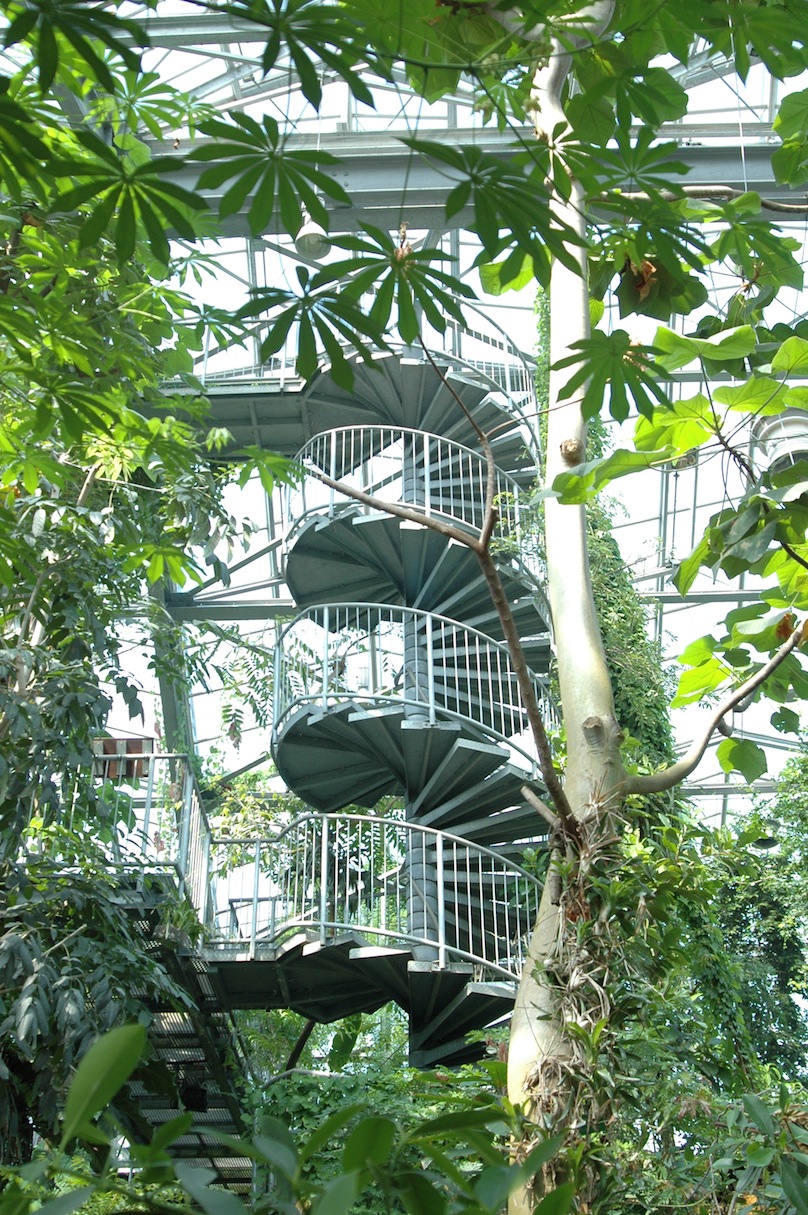Main content
Top content
The Botanical Garden of the University of Osnabrück

Opening hours
from 01.10.2025 until 31.03.2026
the opening hours of the winter half-year apply:
Mon - Fri 8 am - 4pm
Sun, public holiday 10:30 am - 4 pm
Sat closed
The open space in the near-natural quarry is closed during the winter months! The Rainforest House is open.
Contact
Albrechtstr. 29
49076 Osnabrück
phone.: +49 541 969-2739
fax: +49 541 969-2724
E-Mail
Director
Prof. Dr. Sabine Zachgo
room 61/111
phone.: +49 541 969-2840
E-Mail
Kustos
PD Dr. Stefan Abrahamczyk
room 61/112
phone: +49 541 969-2738
E-Mail
Techical Director
Yvonne Bouillon
room 61/107
phone: +49 541 969-2704
E-Mail
Secretary
Claudia Drieschner
room 61/110
phone: +49 541 969-2739
E-Mail
Staff

The central concern of the Botanic Garden is to explore, conserve and communicate the plant biodiversity of our earth, its biodiversity.
As a university garden, it offers essential conditions for research and teaching. The outdoor experimental areas and a vegetation hall are regularly used by students and scientists of the department to conduct experimental research. It has also become a centre of attraction for a steadily growing number of visitors.
The approximately 5.6-hectare core facility is located in a former quarry in the immediate vicinity of the Department of Biology/Chemistry. Plants from all over the world are represented in nine greenhouses and a vegetation hall for cultivation and experiments as well as various open areas. The focus in the open air is on the forests of North America and Eurasia and the plants of the mountains of Europe and Asia, as well as thematic sections on medicinal and aromatic plants and genetics. The Alpinum with plants from the high mountains of Europe and the Euro-Asian steppe are unique facilities for the northwest German region. Translated with www.DeepL.com/Translator (free version)
The Rainforest House, completed in 1997, has been open to the public since 1998. Here, the various forms of the lowland rainforest in the Amazon basin are displayed with about 800 tropical plant species. Via a spiral staircase in the 21-metre-high house, which towers above the steep wall, visitors can gain an insight into the canopy region. The rainforest house is a special attraction of the garden with its architecture and planting as well as the frogs living there.
The pedestrian connection of the neighbouring, second quarry at the Westerberg to the Botanical Garden was realised in 2010. The connection creates the prerequisite for securing this 2.7 hectare endangered and protected biotope. Programmes to expand bat roosts, limit the growth of invasive, non-native plants (neophytes such as Hercules perennial and Japanese knotweed) and the construction of an insect hotel serve to protect this biotope close to the city. Through this expanded, dual garden concept, it is now possible to show and preserve both global biodiversity, plant communities living in different regions of the earth, and native, endangered species.

The entire plant stock of the garden comprises approx. 8000 species and is computerised. The scientific plant collections of the garden are continuously being expanded for teaching and research. The existing living collections of the alliaceae (approx. 250 species and 1800 accessions) and the brassicaceae (approx. 200 species and 500 accessions) offer excellent opportunities for research into evolutionary processes.
The Loki Schmidt - Genebank for Wild Plants, the first official seed bank for native wild plant species, was initiated at the Botanic Garden in 2003. In June 2009, the national WEL (Wild Plants for Food and Agriculture) gene bank project was launched, in which three other botanic gardens from Berlin, Regensburg and Karlsruhe are participating with the aim of sampling seeds of important wild relatives of our useful plants throughout Germany in a network and thus preserving them for further research and application purposes.
The Botanic Garden's environmental education facility, the Green School, offers a variety of intergenerational events in which botanical content and fascinating biological relationships are taught. Students can acquire the knowledge to obtain a "garden guide's licence" in a course so that they can then conduct guided tours independently. The construction of the "Bohnenkamp House in the Botanic Garden", a new biological education centre in the Botanic Garden, was made possible by generous support from the Bohnenkamp Foundation, as well as the University and the State of Lower Saxony.
The "Friends of the Botanical Garden of the University of Osnabrück e.V." was founded in September 1986. It significantly supports the expansion of the garden and its environmental education tasks through its diverse voluntary commitment.







